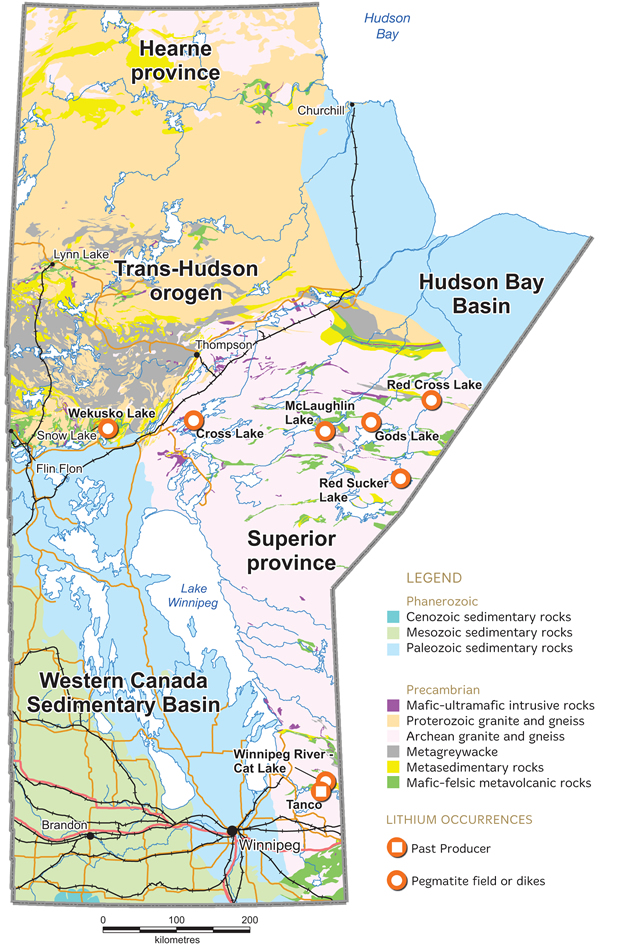
The Premier’s priorities
by Dorothy Dobbie
“After 17 years of the NDP trying to shut down development in the north, it is time to bring us back to our position as the best place in the world to make mining investments,” said Premier Heather Stefanson.
“A lot of damage was done to our international reputation in the minerals field during that time,” she added, “but we are fighting our way back. Over the past year and a half, we have gone from 39th to 14th in the 2022 Fraser Institute Report, which is an improvement, but I am not satisfied that we have overcome all the obstacles,” she said.
While the Premier’s commitment to facilitate mining exploration remains absolutely rock solid, the delays in permit granting have been slow to resolve. She is unsatisfied that it takes 25 percent of applicants two years or more to get permits for licenses or notices of work so they can conduct exploration activities. Despite this, she so impressed the mining sector when she met with them that a full 75 percent of respondents remain confident that the Premier will solve the problem. To expedite this, she has appointed a competent and determined minister, Jeff Wharton, who takes seriously his mandate to improve the situation.
Why is this so important? “We want to create hope and opportunity for everyone,” she said. “Mining and resource development are win-wins for all Manitobans, and especially for the Indigenous people in the north who have been kept isolated and away from opportunity for far too long.
“Industry gets it that the world has changed. They now come to the table with plans that benefit Indigenous communities,” she said. “They see the advantages in having an active and eager local workforce. And Indigenous communities are ready to seize those opportunities. The mining industry also realizes that environmental mitigation is part of the deal and, today, they are including this in the package. Responsibly developing our mineral resources along with our agriculture and manufacturing base just makes sense.”
To facilitate mining exploration and development, Manitoba recently announced a $1.55 million grant to support the Mining Association of Manitoba to market and promote Manitoba’s mining sector to the public as well as domestic and international investors.
“Manitoba is in a unique position to capitalize on the current interest in critical minerals such as lithium,” said the Premier. “We need to inform our population about just how much this means to their future. For example, how many people know that Manitoba has the world’s largest cesium mine in the Tanco Mine at Bernic Lake?” Cesium is one of the critical components of today’s battery manufacturing business.

Bernic Lake is just two hours northeast of Winnipeg, 45 minutes from Lac du Bonnet. The Tanco mine has been in operation since 1929 and was previously of interest because of its tantalum, used for, among other things, electrolytic capacitors for miniaturized electrical circuits and vacuum furnace parts. Tantalum often occurs in conjunction with cesium and lithium. The Manitoba site has 82 percent of the world’s known deposit of pollucite, which contains high concentrations (about 20 percent by weight) of cesium.
Bernic Lake is not the only deposit of lithium-bearing pegmatite in Manitoba. So far, we know that resources also occur at Red Sucker Lake, Gods Lake, Cross Lake, Red Cross Lake, McLaughlin Lake, and at Wekusko Lake. Many of these locations are on Indigenous lands and many in the eastern part of the province, from the southeast corner to the Hudson Bay Basin.
“Resource development opens up exciting potential for Indigenous people of the province to create local economies that will allow them to develop and progress,” she said. “It also means more jobs and higher wages for all Manitobans.”
Much of the mineral development is in the northern half of the province so ensuring we have reliable transportation to Hudson Bay is also important. “Having access to the Bay will allow us to ship products from Manitoba to the world without going through crowded, expensive East and West coast ports.”
The Premier’s vision for Manitoba is high-level and unafraid. She aims to support our legacy industries such as agriculture, manufacturing, and transportation with emerging opportunities, such as mining, wherever they occur. She notes you can’t have progressive programs without a strong economy to support them.

